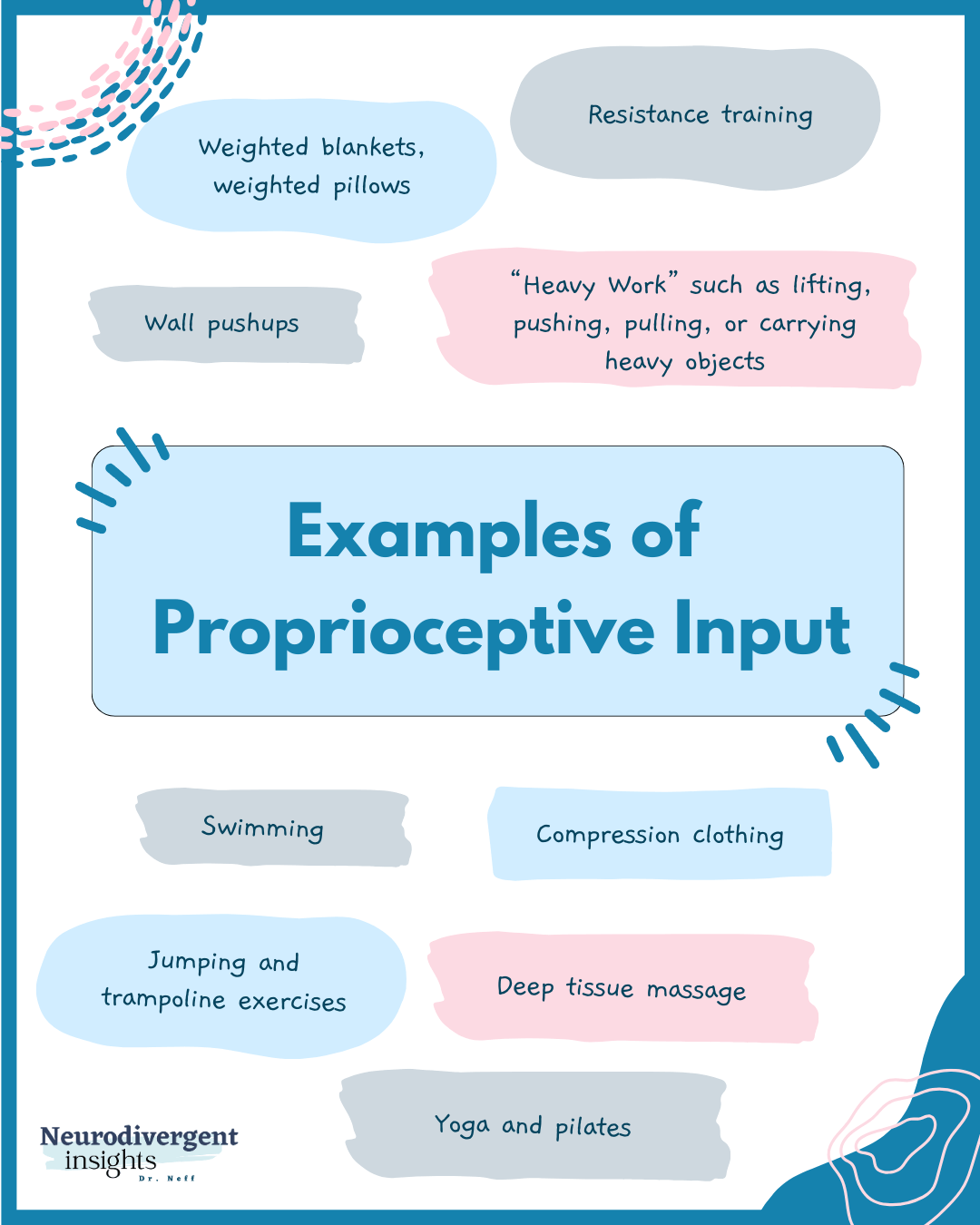Proprioceptive Input: Neurodivergent Clinician Explains 8 Forms
(Disclosure, some of the links below include affiliate links. I earn a small commission from purchases made if you click on these links and purchase something).
What is Proprioception?
Proprioception is one of the eight sensory systems. We sense where our bodies are in space through our proprioception system. Our proprioception system senses spaces and detects force and pressure. It helps us locate where we are in space and how to move. Sensory receptors in our muscles and joints are responsible for our proprioception.
Proprioception plays a role in body awareness, self-regulation, coordination, posture, and the ability to focus. It is common among both ADHDers and Autists to struggle with proprioception. However, one size does not fit all. In the same way, a person may be an under or over-responder to interoception signals; a person may be a proprioception seeker or a proprioception avoider (you can read more about these differences here). Complicating matters, a person may be sensitive to certain proprioceptive inputs while craving others.
Proprioception Inputs
They are many reasons a person may benefit from intentional proprioceptive input activities throughout the day.
A person may crave proprioceptive inputs. Proprioception seekers often crave proprioception input. Proprioceptive input can also be helpful with emotional regulation.
Many Autistic and ADHD people crave proprioceptive input to regulate their responses to sensory over-stimulation (versus other forms of sensory input).
Intentional proprioception input can also help to increase bodily awareness and improve things like coordination.
Below, I’ve included eight different forms of proprioceptive input you can incorporate into your daily rhythm.
8 Different Forms of Proprioception Input
Push-Pull-Lift Activities
Activities involving push-pull-lift all act as proprioception inputs. Things like push-ups, lifting weights, squats, bringing groceries in, and yard work all involve some level of proprioception inputs. This is one of the reasons lifting weights and many forms of exercise and physical labor can help regulate and soothe the body, improving proprioceptive awareness.
Swinging
Swinging provides a lot of proprioceptive input. Many proprioceptive seekers crave this sort of movement. Our family's personal favorite is the swurfer (you can stand or sit on it). We have adapted it for inside use, which works well for our long rainy Oregon winters! The platform swing is another design commonly used among Occupational Therapists.
Bouncing and Jumping
Jumping and bouncing are great ways of getting sensory input for proprioception-seekers. When my children were young, we got A LOT of use out of our Rody. Rody is a donkey-sized bouncy toy that allows children to bounce while stabilizing themselves with their feet. Great for children 2-4. For older kids and adults, bouncing on trampolines is a great way to meet bouncing needs. If your child is a proprioception seeker, they will get a lot of use out of an in-home or outdoor trampoline. For adults, this trampoline is a great option.
Chewing
Chewing is a common proprioception input that many Autistic and ADHD people crave. Chewing on gum, eating a crunchy snack or chewable jewelry are effective ways of getting this need met. For children, there are several great chewable necklace options. And recently, chewelory has even come out for adults! Chewable pencil toppers or the more discreet chew tags can be a good option for those looking for something more discreet.
Weighted Blanket (Pressure)
Weighted blankets provide a lot of pressure (which serves as a proprioceptive input). I always feel best when I have something heavy on my lap. For this reason, I enjoy both a good weighted blanket for sleep and a weighted lap pad for daily use.
Yoga Stretches
Some forms of propriceptive input.
Yoga stretches are another powerful source of proprioceptive input. Yoga practices and stretches are particularly beneficial for increasing proprioception awareness and balance. Yoga is helpful as it helps us to practice different forms of staying upright.
Dance
Many Autistic and ADHD people I know (myself included) share stories of spending hours in their bedroom as teenagers dancing. Dancing and music are powerful ways to regulate and gain proprioceptive input. So go ahead, put on your favorite song or playlist (on repeat if Autistic!), and dance away.
Kneading and Squeezing
Kneading something tough with your hands (dough, playdough, sand, or squeezing a stress ball) provides proprioceptive input. A subtle stress ball can be a discreet way to get proprioceptive input during meetings, school, and other times where you’d prefer not to bring attention to it.




